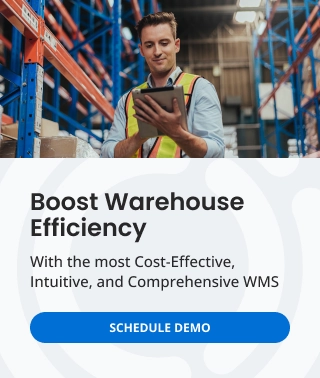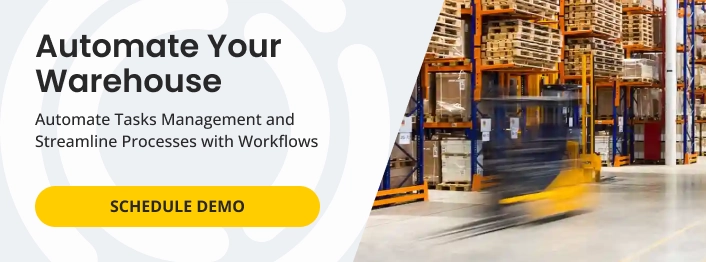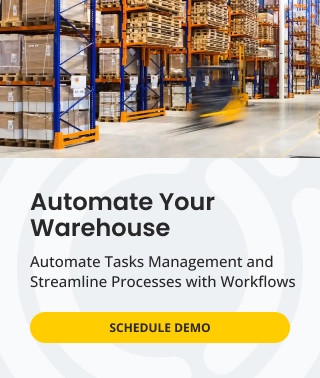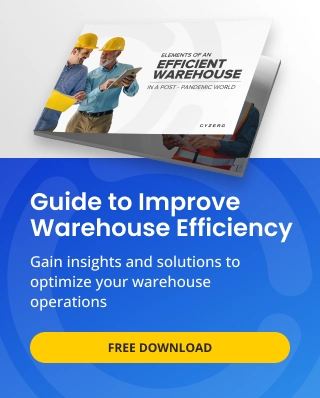Choosing the best warehouse management system for your supply chain operations can feel like a daunting task, especially when there are so many type of software out there. A good WMS is more than just software; it’s a tool that can transform your warehouse, helping you increase operational efficiency, reduce errors, and scale your business.
But how do you know which WMS is the right one for your warehouse? This guide breaks down the key factors to consider, so you can find the best warehouse management system (WMS) for your specific needs.
1. Understand Your Business Needs
Before supply chain managers and warehouse managers start shopping for a WMS, it’s essential to understand the warehouse’s unique needs. Every business is different, and the best warehouse management solution for one company might not be the right fit for another. Decision makers, should take the time to evaluate current processes and identify any pain points you want to solve.
Questions to Ask Yourself:
- How many SKUs (stock-keeping units) do we manage?
- What’s our average order volume?
- Do we need support for multiple warehouse locations?
- Are there any specific industry regulations we need to comply with (e.g., food safety, pharmaceuticals)?
- Do we need a system that is cost effective?
- Does the new system needs to support software integrations? Example, do you need to integrate with an enterprise resource planning (ERP) system or a labor management system?
For example, if you’re running a small warehouse with a moderate SKU count, you might not need all the bells and whistles that a large, multi-site operation requires. On the other hand, if you’re managing multiple warehouses or handling complex operations like e-commerce fulfillment, you’ll need a WMS that can scale and integrate smoothly.
2. Key Features to Look for in a WMS
When evaluating warehouse management software, focus on the features that will provide the most value to your operations. Many WMS systems come with robust tools that help streamline key warehouse processes, from inventory tracking to order fulfillment. Here are the key features you should prioritize:
Inventory Management
Managing inventory efficiently is one of the core functions of a WMS. Look for a system that offers real-time tracking and inventory levels, so you always know what’s in stock, where it’s located, and when it’s time to reorder.
According to a report by Logistics Management, warehouses that use real-time inventory tracking see a 30% improvement in inventory accuracy.
Order Fulfillment
Efficient order fulfillment is key to keeping customers happy. A well-chosen warehouse management software will streamline processes such as picking, packing, and shipping, while reducing errors. Some cloud based WMS solutions also offer advanced features like wave picking or batch picking to optimize the workflow.
Automation Capabilities
Automation is transforming warehouse processes, reducing manual tasks and improving overall speed and accuracy. Your chosen WMS systems should support tools like barcode scanning, workflows and automatic capture of weight, dimensions and digital images.
Research shows that automation can reduce picking errors by 67%, leading to more accurate order fulfillment and higher customer satisfaction.
Scalability
As your business grows, so should your WMS. The system you choose needs to be scalable, allowing you to add more users, locations, and features as your business expands. Scalability ensures you won’t outgrow the software and need to switch systems down the road.
Integration
A WMS must integrate smoothly with your existing tools, including ERP systems, CRM platforms, and shipping solutions. Seamless integration reduces manual data entry and ensures accurate information flows across your business.
User-Friendly
Ease of use is a critical factor in WMS adoption and effectiveness. Look for software with a user-friendly interface that simplifies onboarding, reduces training time, and enhances productivity. A WMS that’s easy to navigate ensures your team can focus on operations rather than struggling with complex software.
3. Industry-Specific Considerations
Not all WMS solutions are built the same, and certain industries have specific needs. For example, a retail warehouse might prioritize fast order fulfillment and returns processing, while a food warehouse needs to focus on lot tracking and compliance with expiration dates.
Key Industry Examples:
- Retail & E-Commerce: Look for features like multi-channel integration, fast order processing, and returns management.
- Food & Beverage: Lot tracking, expiration date monitoring, and compliance with food safety regulations are essential.
- Pharmaceuticals: The WMS should support strict regulatory compliance, batch tracking, and product recalls.
Choosing a WMS that is designed for your industry ensures that it has the features and functionality you need to meet regulatory requirements and industry best practices.
4. Total Cost of Ownership
The total cost of ownership for a cloud based WMS includes much more than just the upfront price. Consider setup fees, training, support, and long-term maintenance when evaluating different WMS systems.
What to Consider When Calculating TCO:
- Setup and Implementation: How long will it take to get the system up and running? Will you need outside consultants to help with the implementation?
- Training: How easy is the system to use, and how much training will your team need? Some WMS solutions offer built-in training modules, while others require additional support.
- Ongoing Support: What kind of support does the vendor offer? Is there 24/7 customer service available? Make sure you understand what’s included in the price and what will cost extra.
- Software Updates and Maintenance: Does the vendor provide regular updates and maintenance, and are these included in the cost?
Studies show that businesses often underestimate the true cost of software by as much as 25-50% when they don’t account for ongoing maintenance and support.
If you want to learn more about the costs associated with a warehouse management system, check out our blog, “What Does Warehouse Management Software Cost? A Comprehensive Guide“.
5. Vendor Support and Reputation
Selecting the right WMS isn’t just about the software itself. It’s also about the company behind it. A WMS is a long-term investment, so you need to choose a vendor you can trust.
Things to Look for in a Vendor:
- Proven Track Record: Look for vendors with a strong reputation in the industry. Check online reviews, ask for references, and talk to other businesses using the system.
- Customer Support: Make sure the vendor offers reliable customer support. A good WMS is only as good as the help you get when things go wrong.
- Ongoing Improvements: The best warehouse management system providers are constantly updating their systems to include the latest features and technologies. Make sure the vendor you choose is committed to keeping the system up to date.
Tip: Ask the vendor for case studies or references from businesses in your industry to see how well the system has worked for them.
6. Implementation and Training
Even the best warehouse management system won’t help your business if it’s not implemented correctly. Be sure to ask potential vendors about the implementation process, how long it will take, and what kind of training and support they offer.
Key Implementation Considerations:
- Timeline: How long will it take to fully implement the WMS in your warehouse? Some systems can be up and running in a few weeks, while others may take months.
- Training: What kind of training will your team need to effectively use the system? Will the vendor provide on-site training, or will it all be done remotely?
- Customization: Will the system need to be customized to fit your specific workflows? Customization can extend the implementation timeline, so be sure to plan for this.
According to Panorama Consulting, 64% of WMS implementations run over schedule, so it’s crucial to set realistic expectations with your vendor.
7. Evaluate ROI
A WMS is a big investment, and it’s important to evaluate the return on investment (ROI) before making a final decision. The best warehouse management system will improve efficiency, reduce errors, and help your business grow—all of which should translate into measurable cost savings.
How to Measure ROI:
- Labor Savings: Automating manual tasks reduces the need for labor, freeing up employees to focus on more valuable tasks.
- Error Reduction: Fewer picking and packing errors lead to fewer returns and less wasted time and money.
- Customer Satisfaction: Faster, more accurate order fulfillment leads to happier customers and repeat business.
- Scalability: A WMS that can grow with your business reduces the need to replace systems as you expand, saving you money in the long term.
Businesses that implement a WMS typically see a 20-30% increase in warehouse productivity within the first year.
Conclusion
Selecting the best warehouse management system for your warehouse is one of the most important decisions you’ll make. By understanding your unique needs, evaluating key features, and considering the total cost of ownership, you can find a system that streamlines your operations and helps you grow.
Remember, the right WMS isn’t just about solving today’s problems—it’s about setting your warehouse up for long-term success.
Ready to see how our WM Orchestrator SaaS can transform your warehouse operations? Schedule a demo today and discover how you can improve efficiency, reduce errors, and scale your business with our powerful, easy-to-use solution.
To learn about warehouse technology trends, follow us on LinkedIn, YouTube, X, or Facebook. If you have other inquiries or suggestions, please contact us here. We’ll be happy to hear from you.
Related Blogs

Mastering Your Warehouse with WMS Software: A Comprehensive Guide
We all know that a well-run warehouse is essential for any business that deals with physical goods and fulfillment operations. But keeping track of inventory, managing orders, and optimizing workflows can be a real he...
Start Reading

What is Warehouse Automation? A Guide for Warehouse Managers
As a warehouse manager, you face the daily challenge of increasing productivity, reducing costs, and improving efficiency. Warehouse automation offers an exciting opportunity in this pursuit, but as with any new and i...
Start Reading

Warehouse Customer Portal: Definition and Benefits
Tired of endless phone calls and emails just to get basic updates on your inventory or shipments? A warehouse customer portal puts all that information at your fingertips, 24/7.
Start Reading







